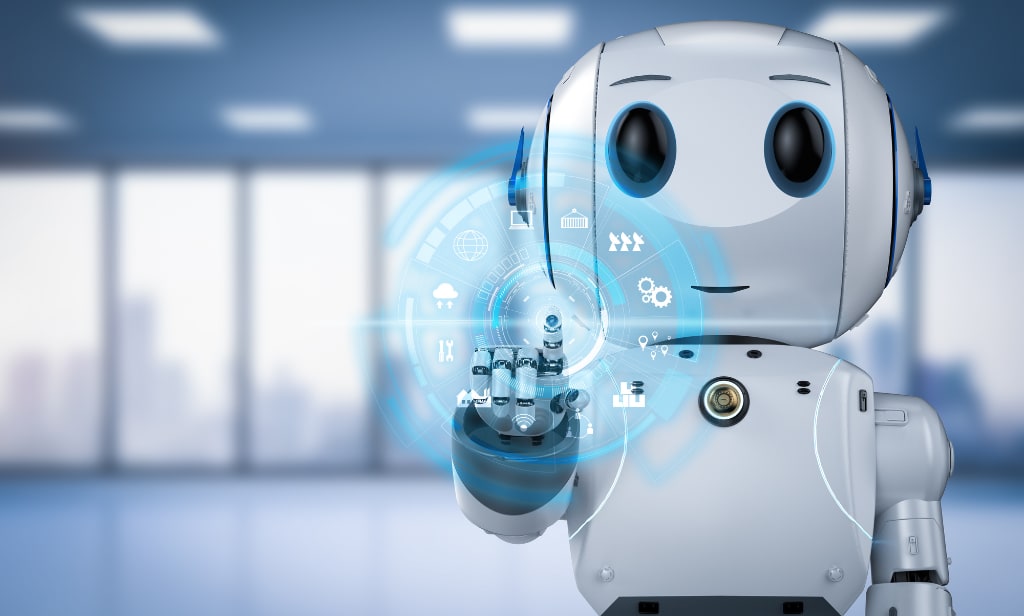Robotics and Automation: Transforming Industries and Shaping the Future
Robotics and Automation: Revolutionizing Industries for a Smarter Future

In the landscape of modern industry, robotics and automation have emerged as transformative forces, revolutionizing processes, enhancing efficiency, and reshaping the workforce. From manufacturing to healthcare, agriculture to logistics, robotics and automation technologies are driving unprecedented advancements and redefining the possibilities of human-machine collaboration. This article explores the profound impact of robotics and automation across various sectors, examining both the benefits and challenges they present as we navigate towards a more automated future.
Applications of Robotics and Automation
Manufacturing and Production:
Robotics has revolutionized manufacturing by automating repetitive and labor-intensive tasks. Industrial robots equipped with advanced sensors and precision actuators assemble products with unparalleled speed and accuracy. Automated production lines optimize efficiency, reduce production costs, and improve product quality. For example, automotive manufacturers utilize robotic arms for welding, painting, and assembly, enhancing productivity while ensuring consistent output.
Healthcare and Medicine:
In healthcare, robots are revolutionizing patient care and medical procedures. Surgical robots, such as the da Vinci Surgical System, enable minimally invasive surgeries with greater precision and reduced recovery times. Telepresence robots facilitate remote consultations and patient monitoring, enhancing access to healthcare in underserved areas. Autonomous robots assist in medication delivery, sterilization of hospital rooms, and rehabilitation therapies, augmenting healthcare professionals and improving patient outcomes.
Agriculture and Food Production:
Agriculture benefits from robotic automation through autonomous vehicles, drones, and robotic harvesters. Precision agriculture techniques, enabled by robots and AI, optimize crop management by monitoring soil conditions, applying fertilizers, and detecting pests with precision. Robots automate harvesting tasks, improving efficiency and reducing reliance on manual labor. In food processing, robots handle packaging, sorting, and quality control, ensuring food safety and operational efficiency.
Logistics and Supply Chain:
Robotics and automation streamline logistics operations, from warehouse management to last-mile delivery. Automated guided vehicles (AGVs) and autonomous drones navigate warehouses, picking and packing orders with speed and accuracy. Robots collaborate with humans in fulfillment centers, optimizing inventory management and order fulfillment processes. Automated delivery robots and drones enhance efficiency and reduce delivery times, transforming the logistics landscape.
Benefits of Robotics and Automation
Enhanced Efficiency and Productivity:
Robotics and automation improve operational efficiency by executing tasks faster, with greater precision, and without fatigue. Automated systems operate around the clock, optimizing production schedules and reducing downtime. This efficiency translates into increased output, reduced costs, and improved competitiveness for businesses.
Improved Safety and Quality:
Robots perform hazardous tasks in environments unsuitable for human workers, such as handling toxic chemicals or working in extreme temperatures. Automation reduces workplace accidents and injuries, enhancing workplace safety. Additionally, robots ensure consistent quality in manufacturing and assembly processes, minimizing errors and defects.
Cost Savings and ROI:
While initial investments in robotics and automation can be significant, they offer long-term cost savings through reduced labor costs, lower error rates, and improved resource utilization. Automated systems increase throughput and operational reliability, resulting in a positive return on investment (ROI) over time.
Innovation and Technological Advancements:
Robotics drive technological innovation by pushing the boundaries of AI, machine learning, and sensor technology. Advancements in robotics enable new applications and capabilities, from collaborative robots (cobots) that work alongside humans to AI-powered autonomous systems that learn and adapt to changing environments.
Challenges and Considerations
Job Displacement and Workforce Transition:
The widespread adoption of robotics and automation raises concerns about job displacement and the need for workforce reskilling. While automation creates new job opportunities in robot maintenance, programming, and supervision, it can eliminate traditional manufacturing and manual labor roles. Addressing these challenges requires proactive policies for workforce training and transition support.
Ethical and Social Implications:
Ethical considerations surround the use of robotics in decision-making processes, privacy concerns in healthcare robotics, and the impact of automation on socio-economic equality. Responsible deployment of robotics requires frameworks for ethical AI, data privacy protections, and inclusive societal dialogue on the future of work.
Integration and Compatibility:
Integrating robotics into existing infrastructure and workflows requires careful planning and investment. Compatibility issues, cybersecurity risks, and the need for interoperability between different robotic systems pose challenges for seamless integration and operational efficiency.
Regulatory Frameworks and Standards:
Developing regulatory frameworks and safety standards for robotics and autonomous systems is crucial to ensure their safe operation, protect consumers, and address liability issues. Governments and international organizations play a key role in establishing guidelines that promote innovation while safeguarding public trust and safety.
Looking Ahead: Towards an Automated Future
Robotics and automation are poised to continue transforming industries, enhancing global competitiveness, and improving quality of life. As technology evolves, collaboration between industry stakeholders, policymakers, and academia will be essential to navigate the opportunities and challenges of an increasingly automated world. By embracing innovation, fostering responsible deployment, and prioritizing human-centric design, we can harness the full potential of robotics and automation to create a sustainable and prosperous future for all.
In conclusion, the integration of robotics and automation represents a paradigm shift in how industries operate, offering unparalleled opportunities for efficiency, safety, and innovation. As we embrace these advancements, it is essential to address socio-economic impacts, ethical considerations, and regulatory frameworks to ensure a balanced approach to technological progress. Robotics and automation are not merely tools of efficiency but catalysts for transformative change in the global economy and society at large.
About the Creator
Pavitradevi
I'm Pavitradevi S, a passionate writer and lifelong learner dedicated to exploring the world through insightful and engaging articles. My writing journey spans across technology, health, personal development, and economy related .
Enjoyed the story? Support the Creator.
Subscribe for free to receive all their stories in your feed. You could also pledge your support or give them a one-off tip, letting them know you appreciate their work.






Comments
There are no comments for this story
Be the first to respond and start the conversation.